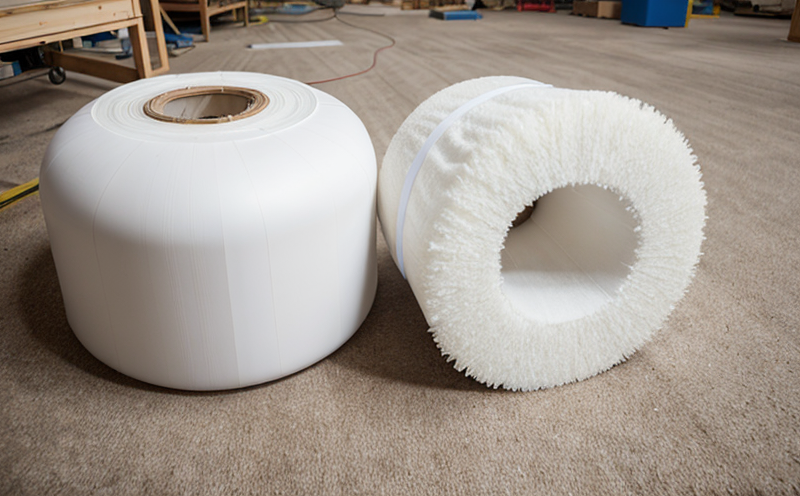ASTM C522 Airflow Resistance of Porous Materials Testing
The ASTM C522 test method is a standardized procedure used to determine the airflow resistance of porous materials, such as insulation boards and fibrous insulations. This test is crucial for manufacturers, architects, and engineers aiming to ensure that their products meet specified performance standards and maintain energy efficiency.
Porous materials are often used in building envelopes and thermal insulation systems due to their ability to reduce heat transfer between spaces. The airflow resistance of these materials plays a significant role in determining the overall thermal performance of insulating systems. ASTM C522 provides a method to measure this property, which is essential for optimizing energy efficiency and ensuring compliance with regulatory standards.
The test involves placing the specimen in a specially designed chamber where air flow is created at a specified pressure difference across the material sample. The airflow resistance (R-value) is then calculated based on the measured air velocity. This value helps engineers and designers select appropriate materials for specific applications, ensuring that insulation systems perform optimally under various conditions.
The results of ASTM C522 testing are critical for several stakeholders in the construction industry. For manufacturers, it provides a means to verify product quality and consistency. For architects and engineers, it supports design decisions by offering data on material performance. Additionally, regulatory bodies can use these test results to enforce building codes and standards related to energy efficiency.
Understanding the airflow resistance of porous materials is not only important for insulation but also for understanding how these materials interact with air flow in other applications such as HVAC systems or soundproofing panels. This knowledge allows for better integration into building designs, leading to more efficient and sustainable structures.
Applied Standards
The ASTM C522 test method is widely recognized and applied in the construction and insulation industries. It aligns closely with international standards such as ISO 8301 and EN 467, both of which provide similar procedures for measuring airflow resistance.
- ASTM C522: This standard specifies a method for determining the airflow resistance of fibrous materials and other porous substances used in building envelopes. It is particularly relevant for insulating boards and batts.
- ISO 8301: An international standard that provides guidelines for testing the air permeability of textile fabrics, which can be related to certain types of porous insulation materials.
- EN 467: This European standard outlines a procedure for measuring the resistance to air flow through fibrous insulating materials used in building constructions.
The use of these standards ensures consistency and comparability across different laboratories, providing reliable data that can be trusted by all parties involved in material selection and construction.
Why Choose This Test
Selecting the appropriate porous materials for insulation applications is essential to achieving optimal thermal performance. ASTM C522 testing offers several advantages over other methods, making it a preferred choice among industry professionals:
- Reproducibility: The method provides consistent results across different laboratories, ensuring that the data obtained can be relied upon for decision-making.
- Ease of Use: The procedure is straightforward and does not require complex equipment or extensive training, making it accessible to a wide range of users.
- Comprehensive Data: By measuring airflow resistance, ASTM C522 offers insights into how materials will perform in real-world conditions, helping designers make informed choices.
The test is particularly valuable for quality managers and compliance officers as it provides robust data that can be used to ensure product quality and meet regulatory requirements. For R&D engineers, it serves as a tool for continuous improvement of existing products or development of new materials.
Competitive Advantage and Market Impact
- Informed Decision-Making: By using ASTM C522 testing, companies can make more informed decisions about material selection, leading to better-performing products that meet market demands.
- Enhanced Reputation: Demonstrating compliance with recognized standards enhances a company's reputation and builds trust among customers and stakeholders.
- Cost Efficiency: Ensuring product quality through ASTM C522 testing can lead to reduced costs associated with rework or material waste, ultimately improving profitability.
The market for insulation materials is highly competitive, and using this test method allows companies to differentiate themselves by offering products that are proven to perform well in various applications. This not only attracts more customers but also opens up new opportunities for growth and expansion into different sectors.





